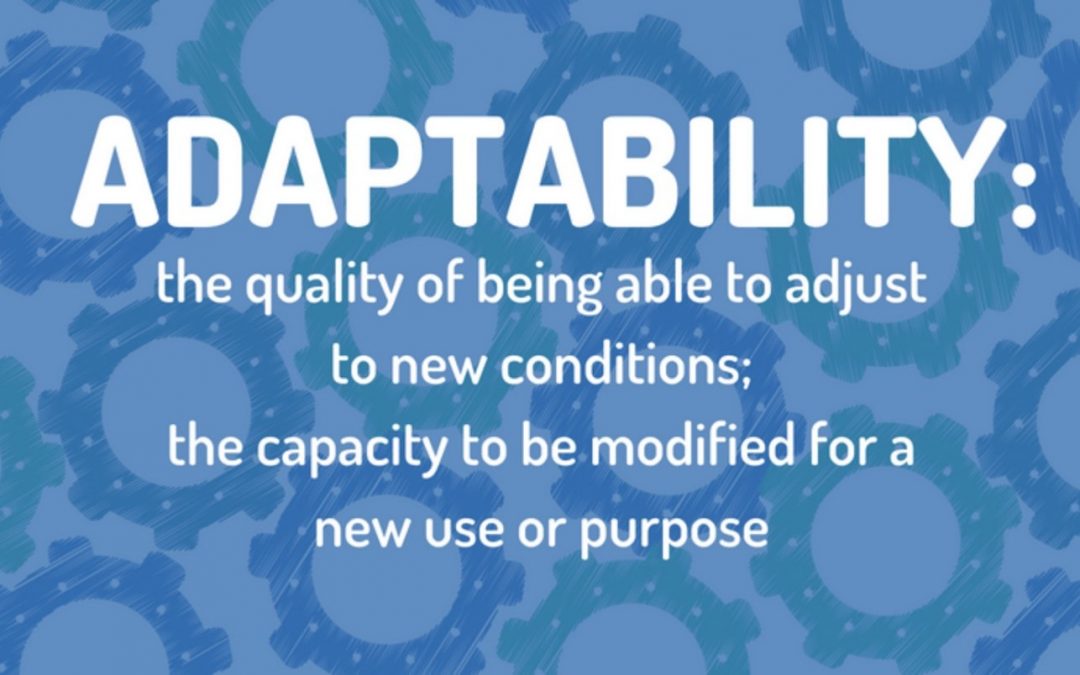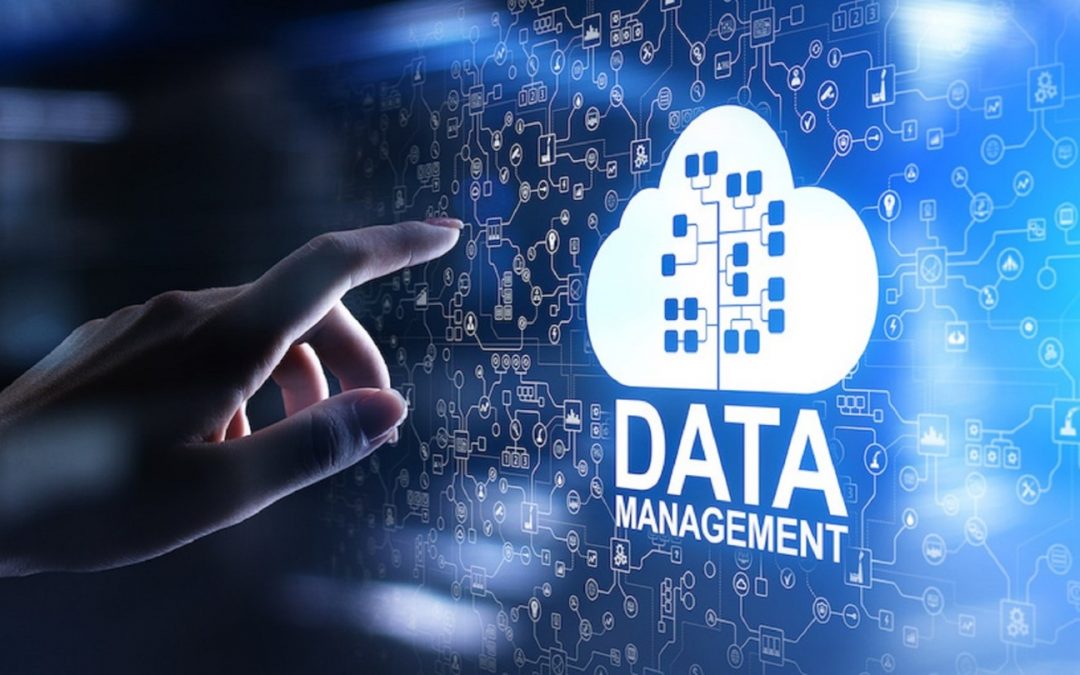
by Art Waskey | Feb 14, 2024 | Art of Sales Weekly, Featured
Looking Back
As I start the New Year, I like to make observations about the previous year. Looking back, 2023 was a year replete with some big challenges for business. Stubborn inflation affected pricing. China’s post-COVID chaos continued exacerbating supply chain issues and accelerated attempts to restore manufacturing. Labor shortages plagued many business sectors. The third-worst year of global economic growth this century (behind 2009 and 2020) slowed sales and geopolitical tensions made us all uneasy. And finally, the use of artificial intelligence (AI) accelerated the pace of change in how business is conducted.
The secret to success in 2023 was adaptability. The best distributors got creative in confronting the year’s biggest challenges. The most important consideration in finding the right path through the weeds was maintaining a focus on customer-centricity. Independent, privately owned businesses’ greatest advantage over alternative channels is their customer relationships.
Selling Then
In the 1970s and early ‘80s, I worked for an international company that distributed welding supplies and atmospheric gases. We sold primarily through independent, privately held businesses. Our field salesforce was comprised of both generalists and specialists. Additionally, the generalists, who were sales engineers, called on distributors in 8 to 10 local territories. The product specialists covered a larger geographic region. Both sales engineers and product specialists reported to regional offices.
The sales engineers were responsible for maintaining personal relationships with their distributors. They managed new product demonstrations, pricing, backorders, administrative issues, and all other corporate communications. The product specialists managed specific technical offerings. For our industry, this included cutting and welding products to identified industries such as railroads, large manufacturers, and other highly sophisticated end-users. As well as all product specialist accounts were assigned to sales engineers to ensure customer-centric relationships.
Selling Now
The sales model above changed radically with the introduction of the Internet. Consider today’s digital-driven Enterprise Sales approach. Account reps have the IoT (Internet of Things), which connects them to all advanced technology applications. Also, the Enterprise Sales rep is now a customer advocate. Communication is largely online and things like product demonstrations can be virtual.
Adapting to digital tools
In conclusion, Enterprise Selling in 2024 requires that sales reps be tech-savvy. To be adaptable to the rapid changes in the sales process make sure your team has the necessary digital tools. Lastly, these include ERP programs, E-commerce capabilities, and artificial intelligence applications, to name a few.
Get tips and tricks like the above in The Art of Sales books. Or subscribe to the FREE monthly articles here.

by Art Waskey | Jan 29, 2024 | Art of Sales Weekly, Featured
One of the greatest advantages of deploying Artificial Intelligence (AI) applications is the effective cost containments they yield. AI can help businesses be more efficient in several areas.
Inventory levels
In short, consider their effects as customers, distributors, and suppliers go through economic cycles. Disruptions can wreak havoc on inventory levels. In fact, predictive analytics like AI can make stocking levels a concern of the past. With AI, your trading partners can enjoy the continuous improvement (CI) of just-in-time (JIT) supply from manufacturer to end user.
Transportation costs
I worked in the welding and gas distribution industry where transportation expenses were a significant factor. In one project — pre-AI — we evaluated how to reduce rolling return stock on cylinder trucks. We estimated customer cylinder usage before the trucks left in the morning. Despite our best efforts, some trucks returned with 40% unused cylinders. Additionally, the cost of loading, unloading, and carrying these unused cylinders was staggering. Nowadays, vast amounts of data are generated through the use of telemetry systems, vendor-managed inventory (VMI), and order history. With this information, AI can be used to improve the proper frequency and loading quantities of products on trucks. In the welding and gas industry, this includes hard goods, gas cylinders, and bulk cryogenic gas deliveries.
Pricing optimization
As a vice president of sales for a distributorship, one of my chief responsibilities was customer pricing. We reviewed spreadsheets and printouts with each sales manager to determine annual price increases, tackling one territory at a time. Today, interactive AI can sort that data and determine the right price for each customer. Moreover, AI software providers boast that they can increase their distributor customers’ returns 10X to 30X with price optimization programming. Based on the results, we recommend that distributors prioritize implementing pricing optimization software in their ERP system.
Warehouse automation – One of the best ways distributors can realize cost improvement is by improving material handling processes in the warehouse. Above all, Robotic Process Automation (RPA) is already revolutionizing warehouse labor costs and can improve working conditions. Additionally, robotic automation empowers artificial intelligence to enhance warehouse handling processes by utilizing data.
Cost containment
In conclusion, consider implementing AI in your business today. Also, enjoy the cost containments you can achieve in pricing, inventory, transportation, and warehouse operations.
Get tips and tricks like the above in The Art of Sales books. Or subscribe to the FREE monthly articles here.

by Art Waskey | Jan 18, 2024 | Art of Sales Weekly, Featured
Artificial Intelligence (AI) applications offer exciting possibilities for transforming how business is done. Its applications are complex and very new. There is a lot to consider when choosing which AI tools to implement. Here are some key factors to look at when researching what’s best for your company.
Manage your data
Distributors collect a myriad of valuable customer, internal, and vendor information in the process of doing business. AI can generate outputs based on that internal data, whether stored in the cloud or on-premises. If that data isn’t properly managed, your AI-driven business processes might suffer the consequences. In a recent Forbes article on this topic, Simon Jelly points out that only 23% of your collected data will probably be “good” data. Your AI applications are only as effective as the data you input. According to Jelley, there is a lot of data to clean to get to the good stuff.
Classify your data
Jelley suggests that after you have captured the relevant data, you classify it. There are 3 key steps to this:
- Create the sets of definitions, labels, and groups you will use to organize your data.
- Apply that taxonomy to your data.
- Establish a single source of truth (SSOT) location for each category of your data.
Clean your data
Once classified, clean your data to rid it of the ROT (redundant, obsolete, or trivial). Redundant data can give AI the impression that something is more important than it is because it’s repeated. Once AI has clean data, it will help keep it clean.
Optimal results
Remember, only about a quarter of the data you collect will be useful to your AI tools. When considering how to get the most out of your AI applications, look to good data management. Classify and clean your data for optimal results.
Get tips and tricks like the above in The Art of Sales books. Or subscribe to the FREE monthly articles here.

by Art Waskey | Jan 11, 2024 | Art of Sales Weekly, Featured
Coming to your market
Artificial Intelligence (AI) applications are rapidly infiltrating market spaces. McKinsey has declared that “AI is poised to disrupt marketing and sales in every sector.” The company predicts that generative AI could increase marketing productivity by 5% to 15% across various applications. These benefits include generating personalized content at a large scale, improving customer engagement, gaining deeper customer and data insights, and enhancing lead identification and development.
Two examples
I recently finished a Zoom training session with a distributor sales rep. As I started Zoom, I received notice of a software update. Someone asked me if I wanted to include AI in the session.” When I accepted, I had no idea what was going to happen. At the end of the training session, I received a pleasant surprise. Zoom AI had captured, classified, and cleaned our entire interaction. The results were amazing. I sent the information to both the trainee and the owner of the distributor. The trainee was able to review our session and the distributor owner received confirmation of its usefulness. Additionally, I gained relevant information for the book I am writing on the topic of training.
In the same week, I had a similar software update from Prezi. I use Prezi to produce the slides for my various training, writing, and speaking applications. Moreover, my digital marketing specialist and I can’t wait to see AI’s impact on enhancing those presentations.
Be more productive
AI’s impact on training and marketing using tools like Zoom and Prezi is just the tip of the iceberg. AI applications are transforming many business processes. One example of how technology can be helpful is by improving the tracking of inventory levels. These tools can also take data generated by GPS and other transit technologies and use it to improve your transportation costs. In conclusion, the same is true for warehouse processes and many more. It’s time to take a serious look at AI’s applications for your business and improve your marketing productivity. Get tips and tricks like the above in The Art of Sales books. Or subscribe to the FREE monthly articles here.

by Art Waskey | Dec 23, 2023 | Art of Sales Weekly, Featured
Data is the basis of Artificial Intelligence (AI) and drives its application. Additionally, it’s accuracy impacts the tool’s effectiveness, making the need for good data management imperative. To use AI effectively for your business, you need to understand the role that good data management plays in its application.
Data management affects the output
The more sophisticated the AI tool is, the more important it is that the data behind it is accurate. In a recent Forbes article on this topic, Simon Jelly explains: “Yes, you can use platforms such as OpenAI’s ChatGPT and Google’s Bard to write a marketing email or improve your product descriptions without worrying about how your data management practices affect these tools’ output. But that’s not true when your organization takes the next step on its AI journey and begins using AI-driven tools for autonomous customer support, supply chain optimization, and cyber resiliency (i.e., identifying and preventing cybercrime such as ransomware)”.
Understanding the terms
It is important to understand the terms that set AI apart from other technology. Jelley writes that autonomy is not the same thing as automation. He states: “Autonomy is self-sufficient and requires no human intervention; it can learn and adjust to dynamic environments and evolve as the environment around it changes. Conversely, automation is narrowly focused on a specific task based on well-defined criteria and restricted to certain tasks it can perform.” AI is an autonomous tool, whereas a robot is an automation tool.
Good data yields good results
It’s time for distributors to embrace the marketing advantages of AI to stay competitive with other supply chain verticals. As well as distribution marketing leaders adopt AI, their success will hinge on proper data management. Your AI applications are only as effective as the information on which they are based. In conclusion, When implementing these new tools, remember that good data yields good results. Get tips and tricks like the above in The Art of Sales books. Or subscribe to the FREE monthly articles here.

by Art Waskey | Dec 18, 2023 | Art of Sales Weekly, Featured
Be a differentiator
The distribution business is built on managing change, building trust, strong relationships, and the ability to find solutions tailored to customers’ needs. The digital marketplace has changed the customer experience. However, today distributors are competing with internet verticals, where relationships are impersonal. By focusing on the customer’s best interest and by staying on the cutting edge of technology, distributors can provide a better customer experience. Moreover, this differentiates them from the internet verticals and enables them to manage the changes in customer behavior.
Sharpen your focus
You have the customer’s trust, now build on it. Your customers won’t use the other verticals if you continue to deliver the best experience. You have the advantage of being more intimately aware of customer needs. Continue to do your homework.
Find the time to view webcasts from the best-in-the-business gurus. These webinars provide insights from top consultants as well as analytics. Distribution Strategy Group, Modern Distribution Management, and the National Association of Wholesalers are three great groups to start with. Additionally, they have daily blogs with industrial news including M&As, earnings, feature articles, events, and up-and-coming webcasts.
Keep digital applications current
Whether you are in the initial stages of your digital journey or are seeking to enhance existing strategies, you must stay current with the rapid changes in the digitalization of your channel. For example, Artificial Intelligence (AI) can serve as a continuous improvement agent. When implemented, AI can optimize and enrich supplier and customer pricing information, relationship content, product selection, promotional strategies, etc.
Managing Change
Managing change is never easy. Navigating the digital customer experience in a rapidly changing world requires time, energy, and financial investment. It demands you have an ongoing focus on delivering the latest product, price, and promotion improvements. Lastly, the challenge is to provide all this in an easy-to-use digital format while continuing to build and strengthen your customer relationships.
Get tips and tricks like the above in The Art of Sales books. Or subscribe to the FREE monthly articles here.






